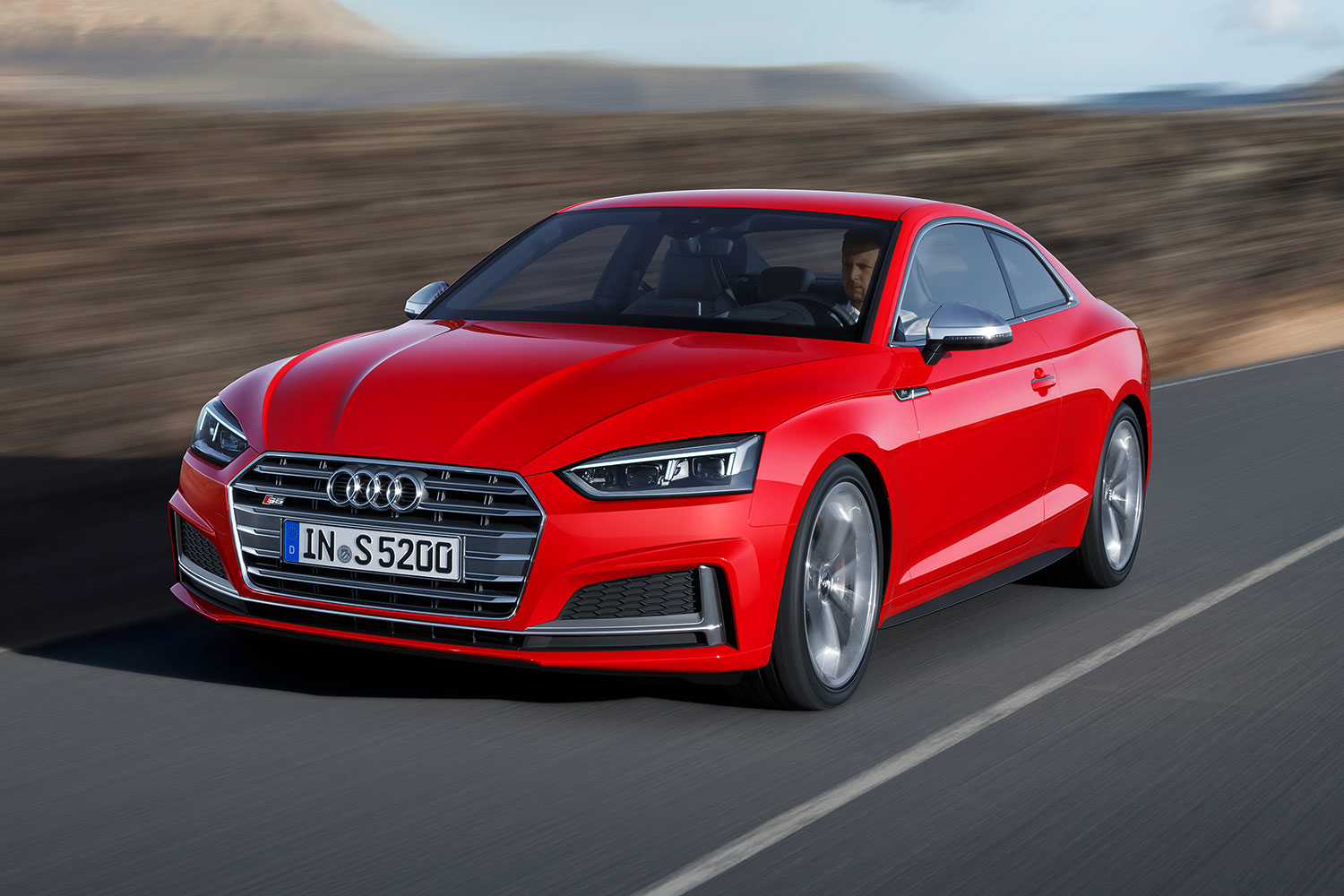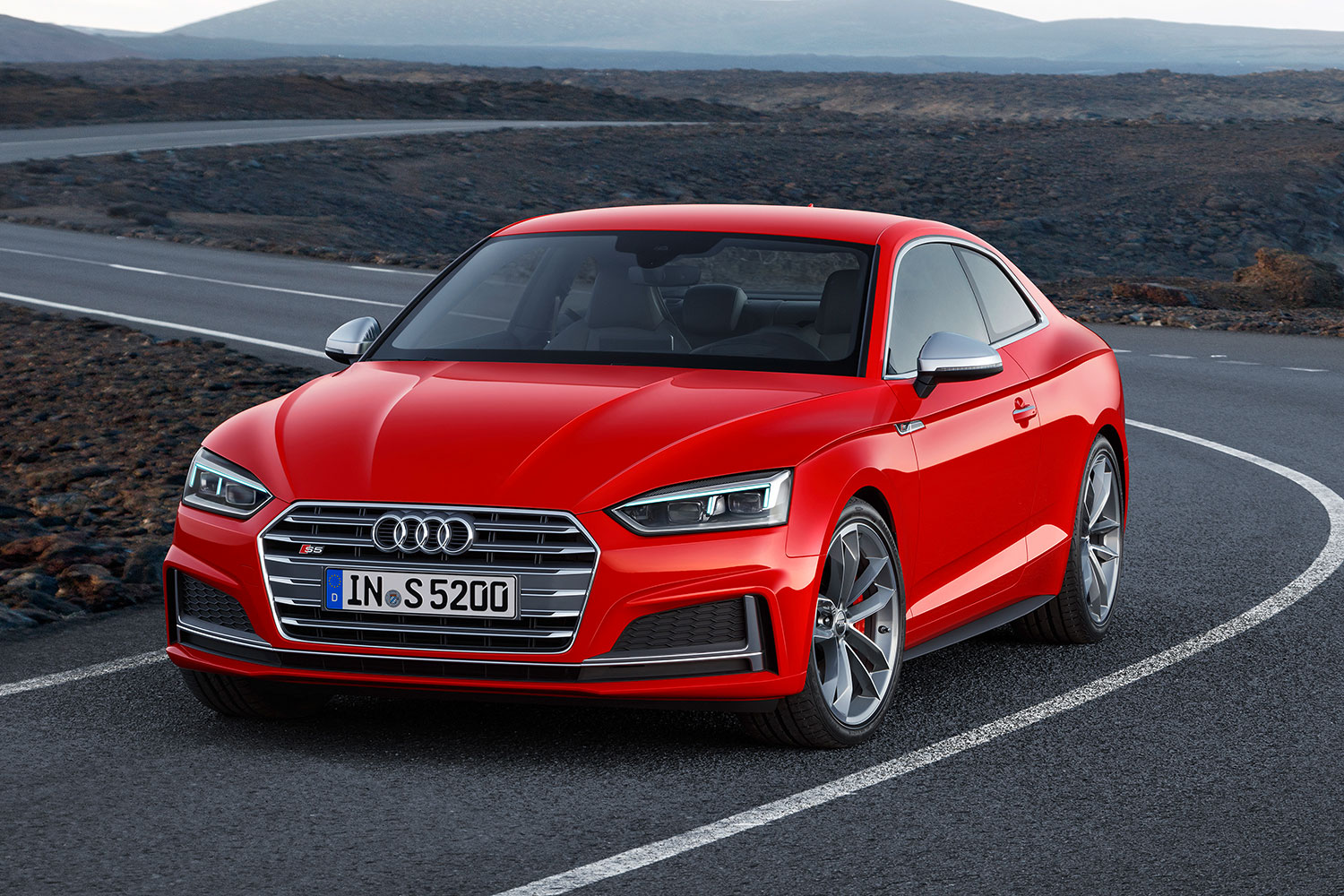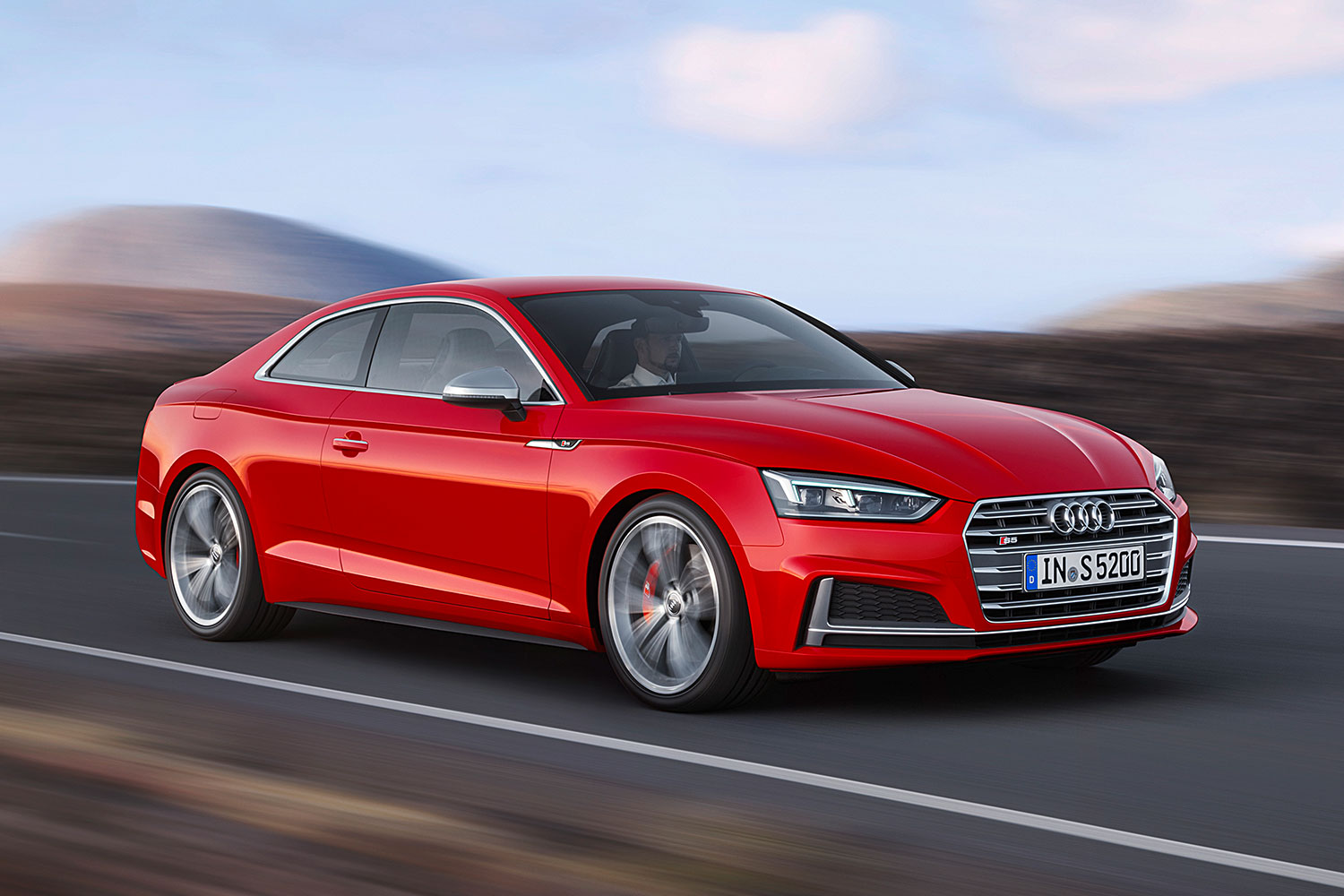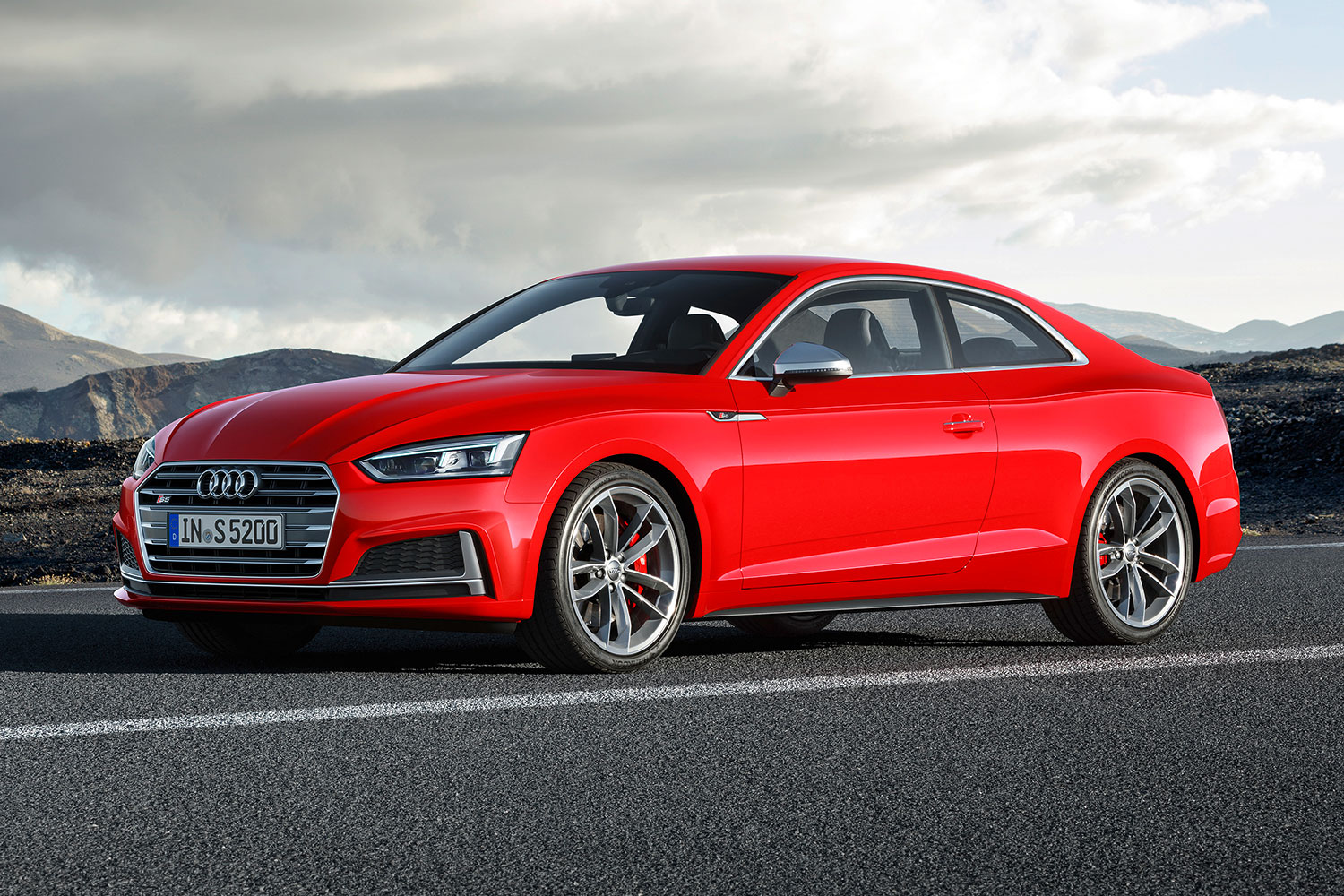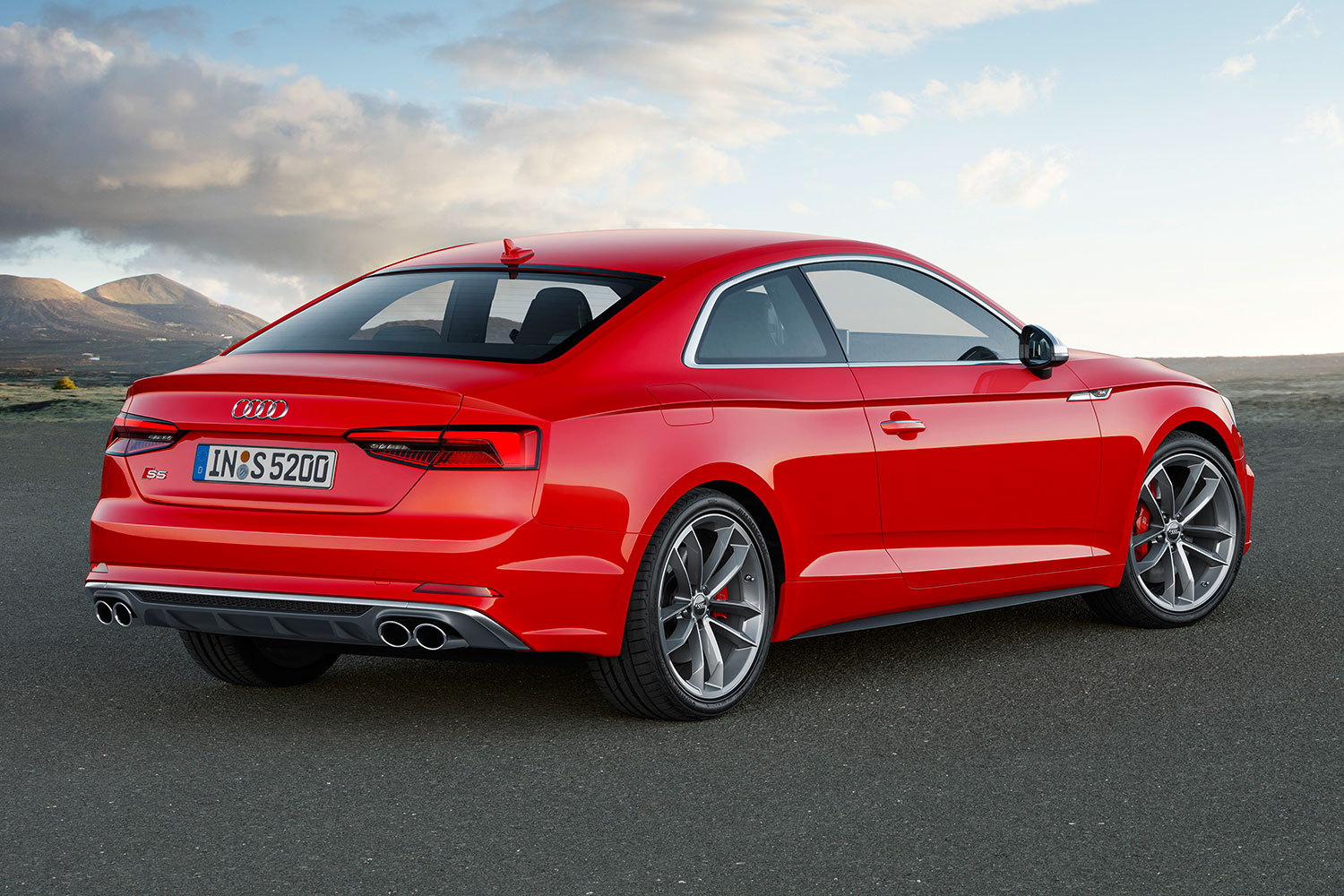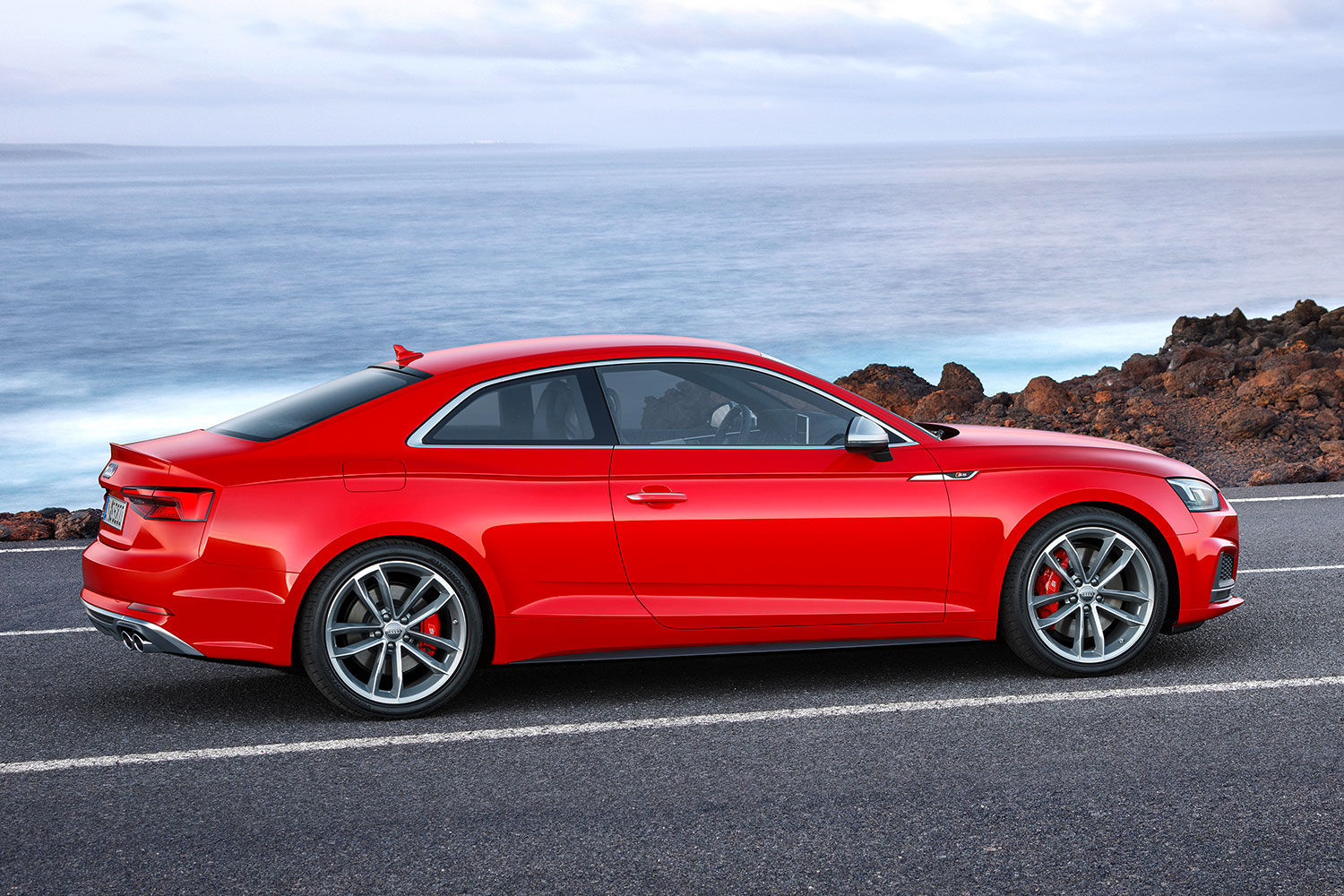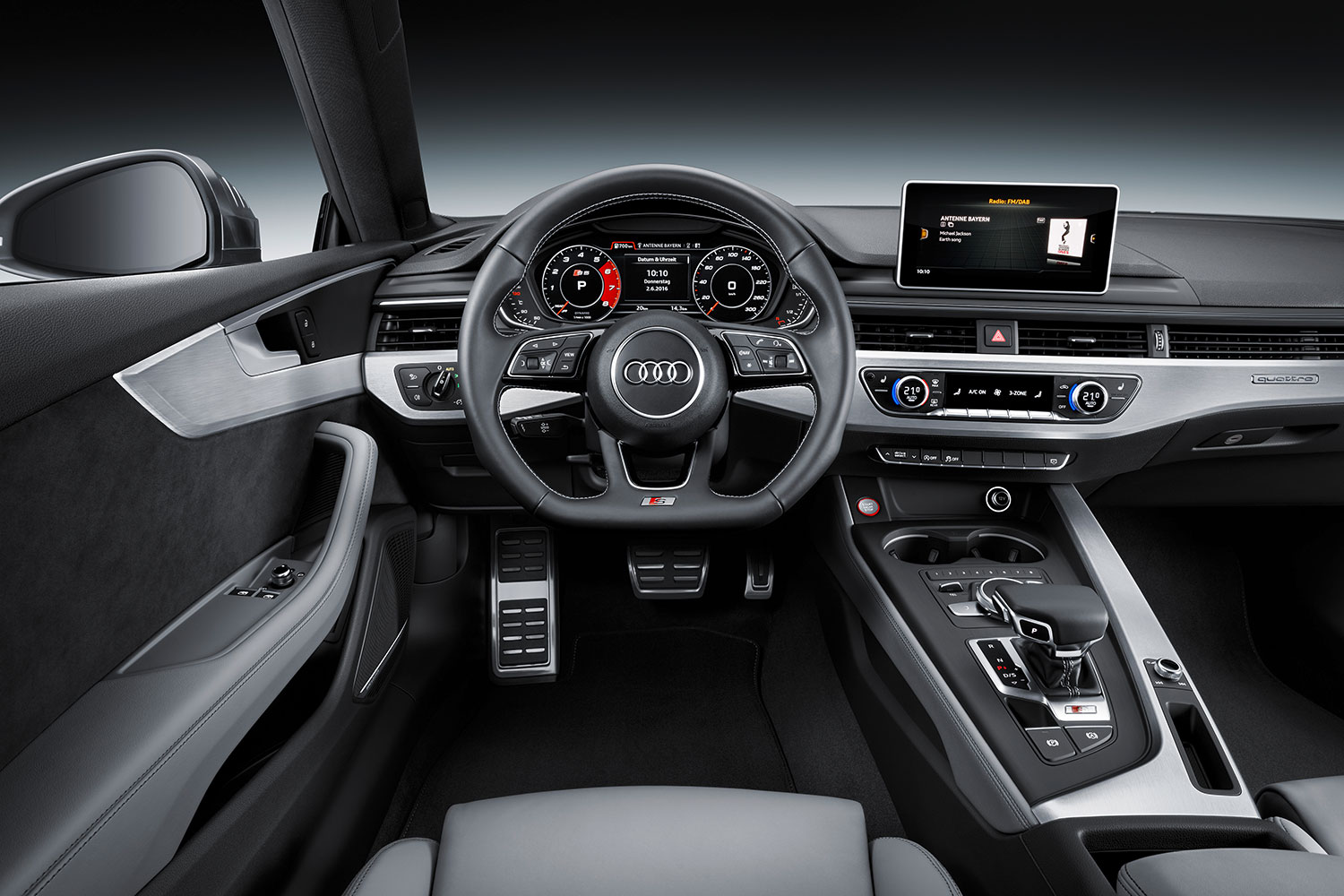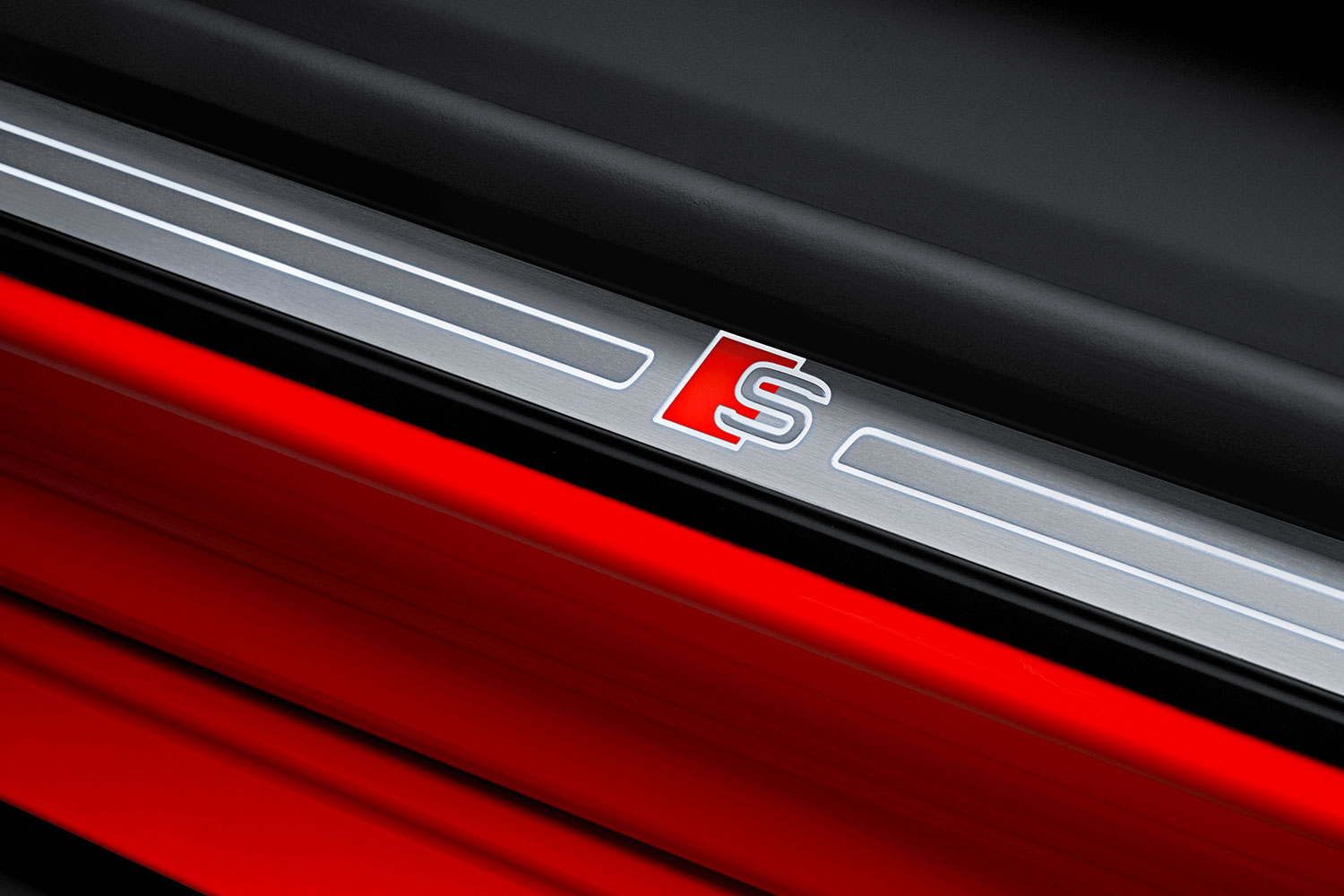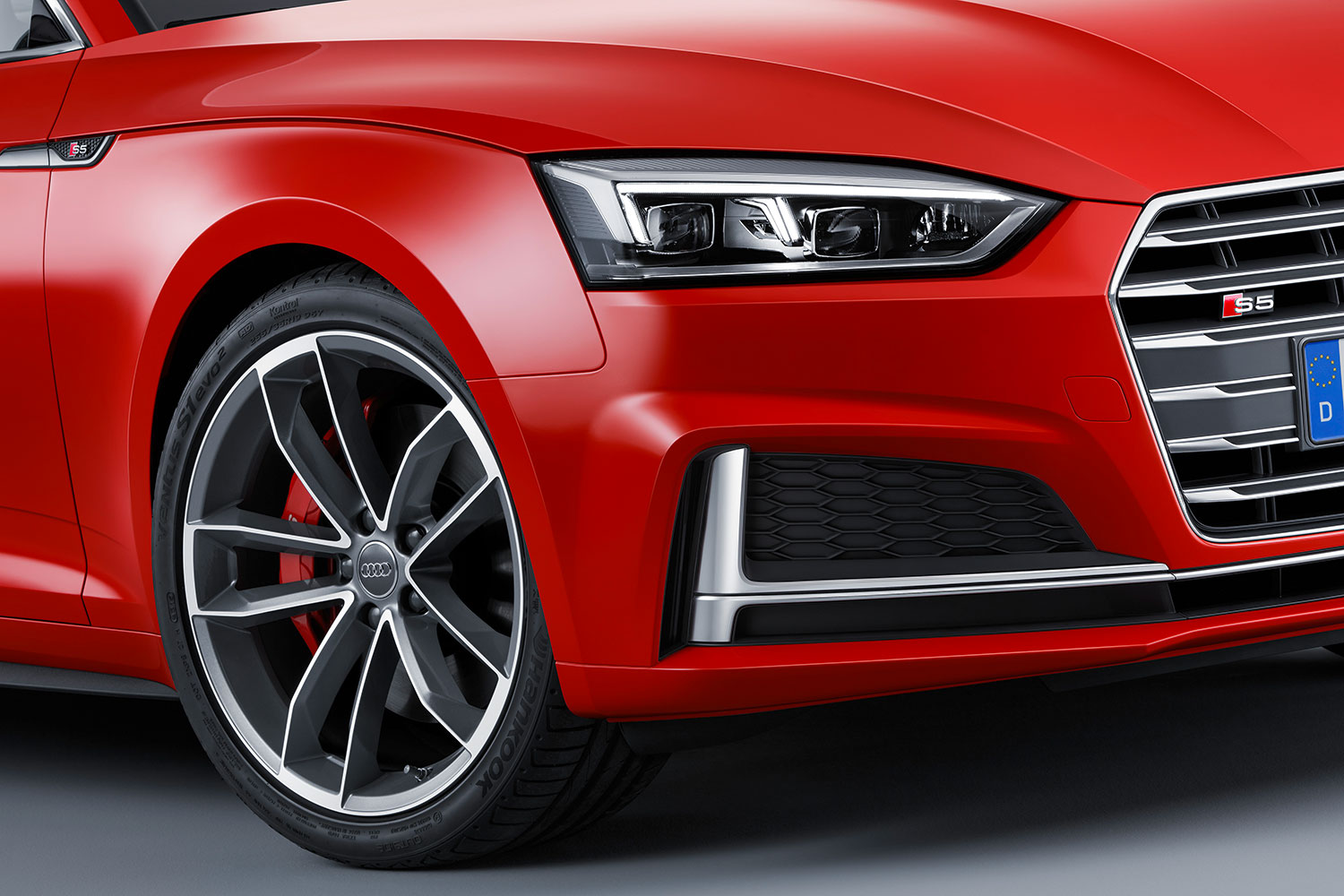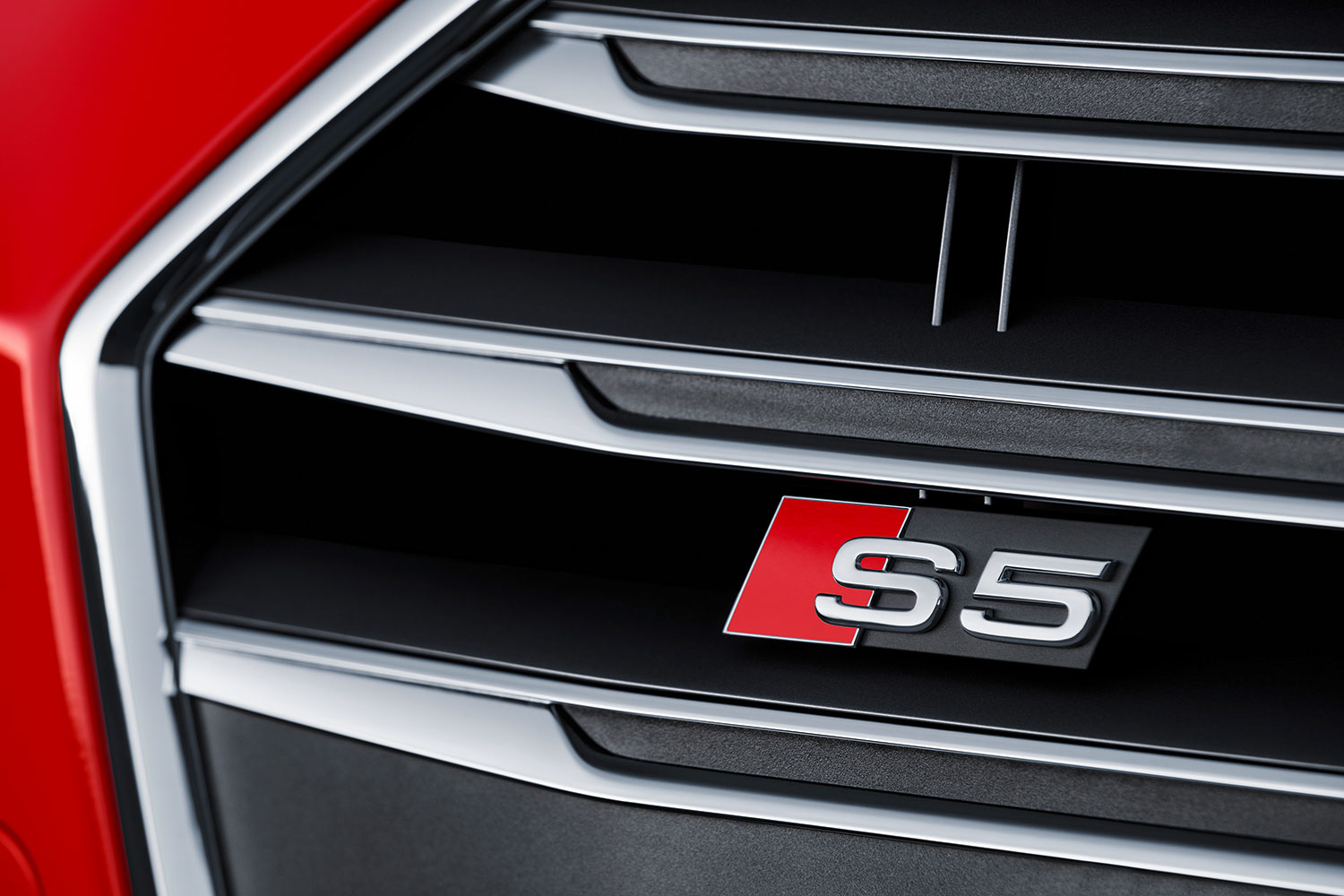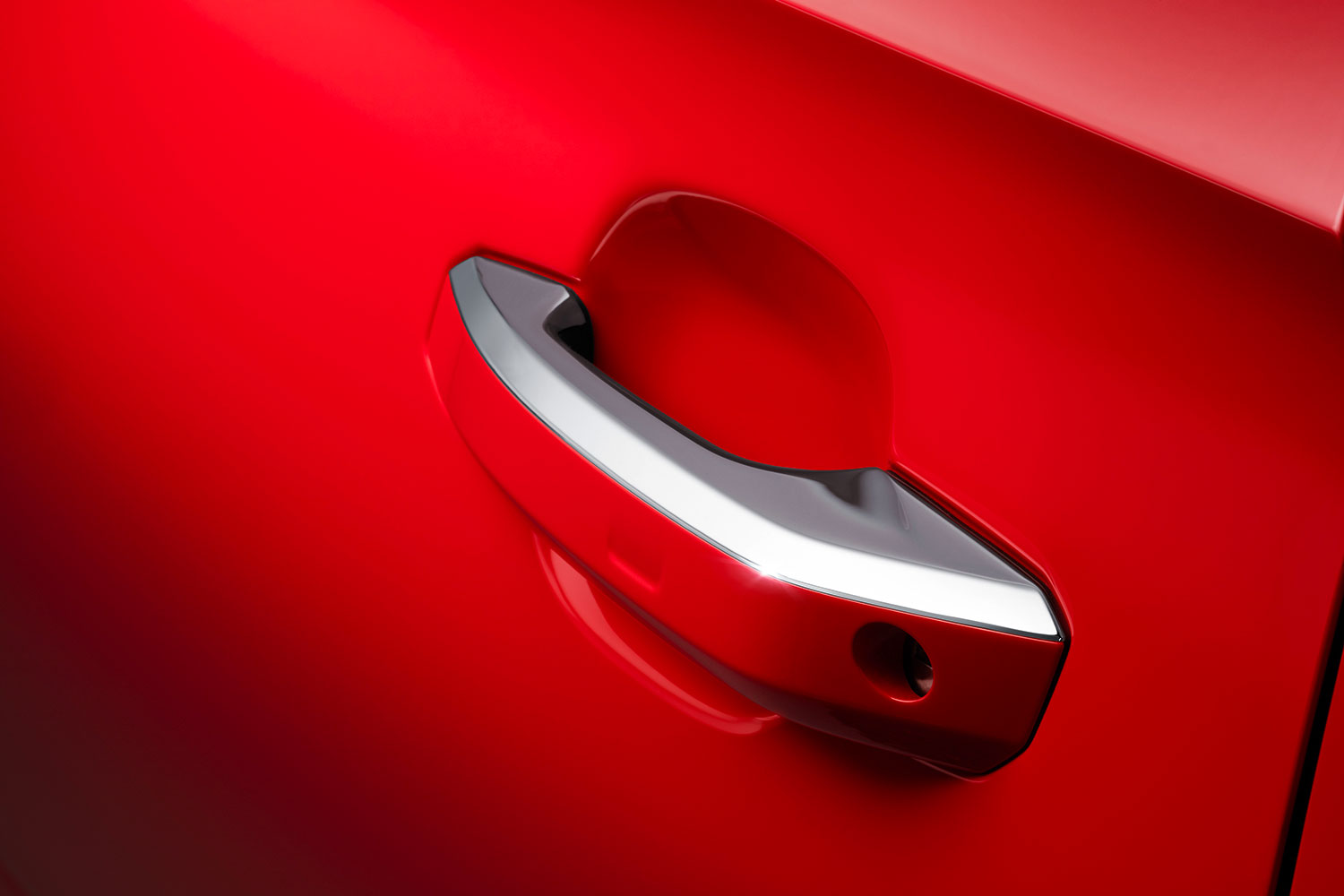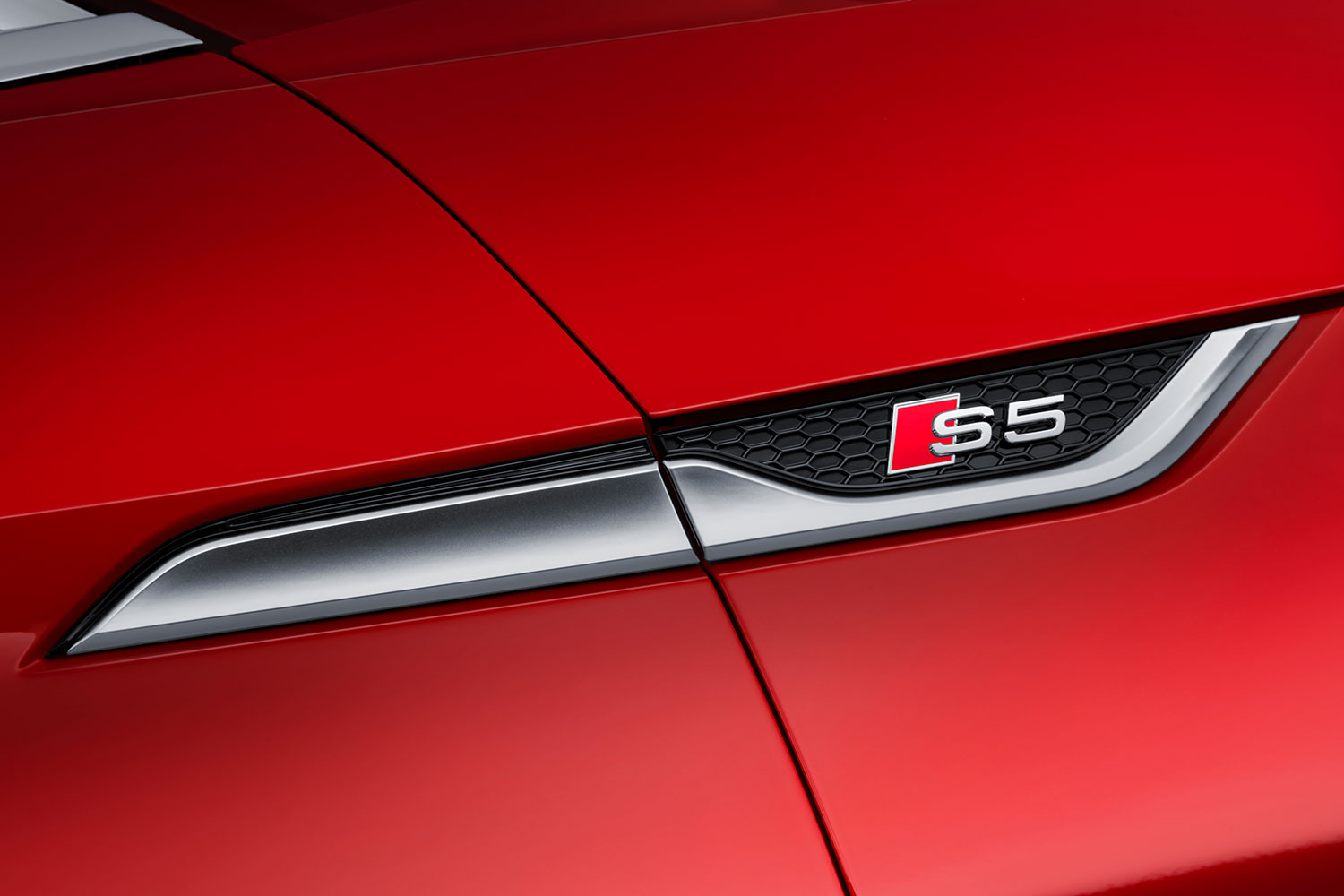Audi has presented the brand new 2017 A5 coupe during an event held in its home town of Ingolstadt, Germany.
The second-generation A5 rides on the MLB Evo platform that also underpins the A4 (which the coupe is closely related to) and the Q7 SUV. Visually, it adopts precisely the kind of evolutionary styling that we’ve come to expect from members of the Audi lineup in recent years. Its front end is a little bit sharper than before, and its rear fascia receives redesigned tail lamps, while its overall silhouette changes little.
Read more: Audi could build a mid-engined car on the next Porsche Boxster’s platform
The cabin is carried over from the A4, meaning it’s more high-tech, more spacious, and more luxurious than ever before. Notably, the A5 boasts a high-resolution screen on the center console that displays the infotainment system, and it’s available with a fully digital instrument cluster that can be configured by the driver to show a wide variety of information about the car and its surroundings. The list of options includes in-car internet connectivity and a wireless phone charger.
While buyers in Europe can choose from a long list of gasoline- and diesel-burning engines, the model we’re getting is exclusively available with a 2.0-liter TFSI four-cylinder mill. It makes 252 horsepower from 5,000 to 6,000 rpm, and 273 pound-feet of torque from 1,600 to 4,500 rpm. A seven-speed dual-clutch transmission sends power to the front wheels, though all-wheel drive is available at an extra cost.
Want more muscle? Audi has you covered with the 2017 S5, which boasts a turbocharged 3.0-liter V6. The six-cylinder generates 354 horsepower, which is enough to send the S5 from zero to 60 mph in just 4.7 seconds. Visually, the S5 stands out from the A5 thanks to a sportier appearance characterized by a specific front bumper with gray trim and honeycomb inserts, an air diffuser out back, and bigger wheels.
Production of the 2017 Audi A5 and S5 is set to kick off in the fall, and we’ll see both models land on our shores before the end of the year. While Audi is introducing the model as a coupe, it will quickly expand the lineup with a convertible, with a range-topping variant named RS 5, and with a fastback model called A5 Sportback. The company has recently hinted that the Sportback — which resembles a scaled-down A7 — will be sold in the United States for the first time ever.
